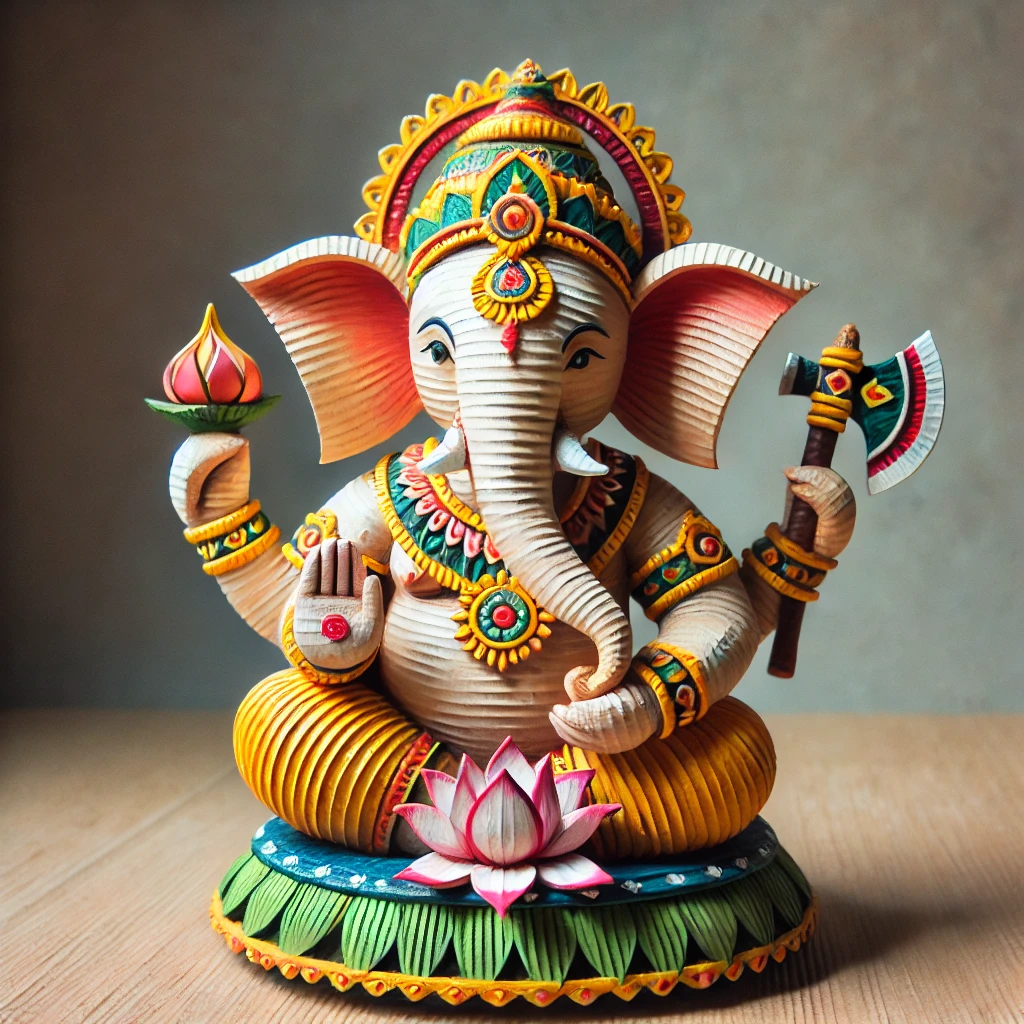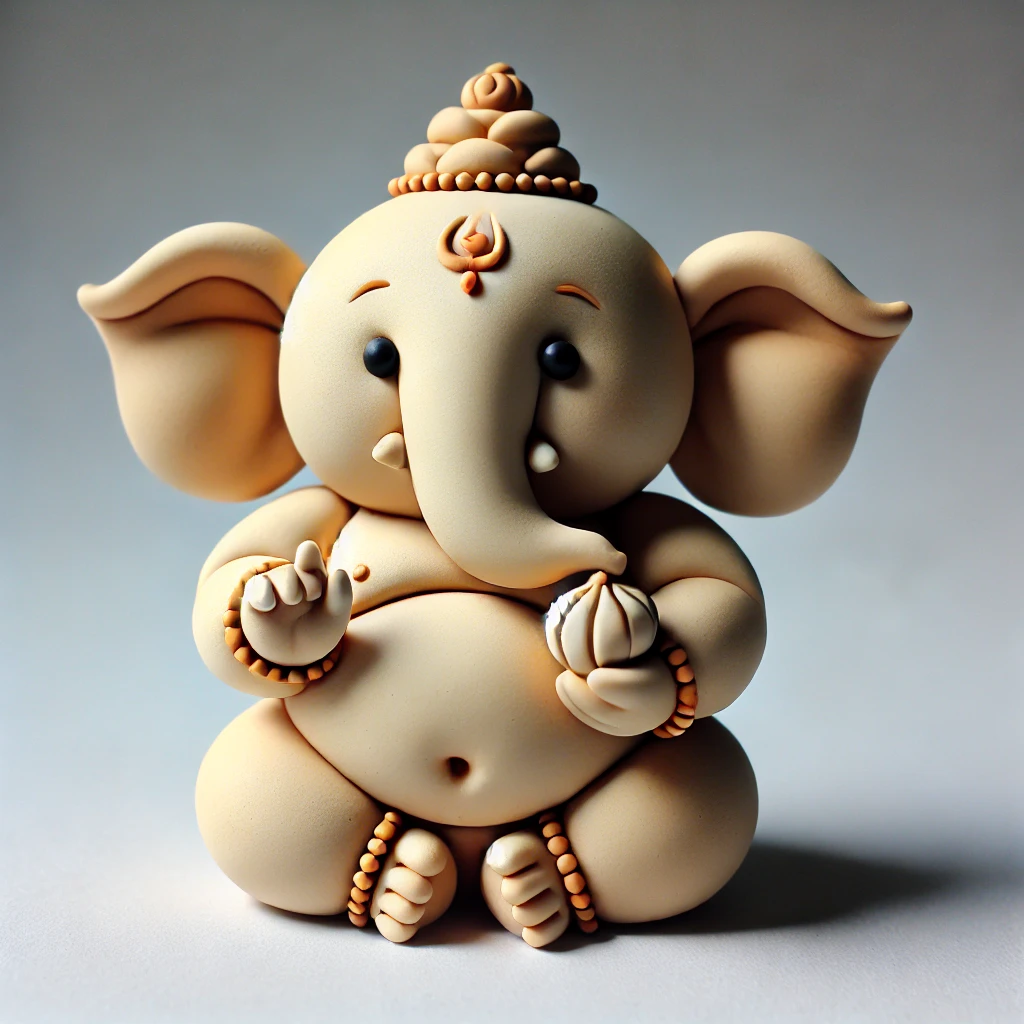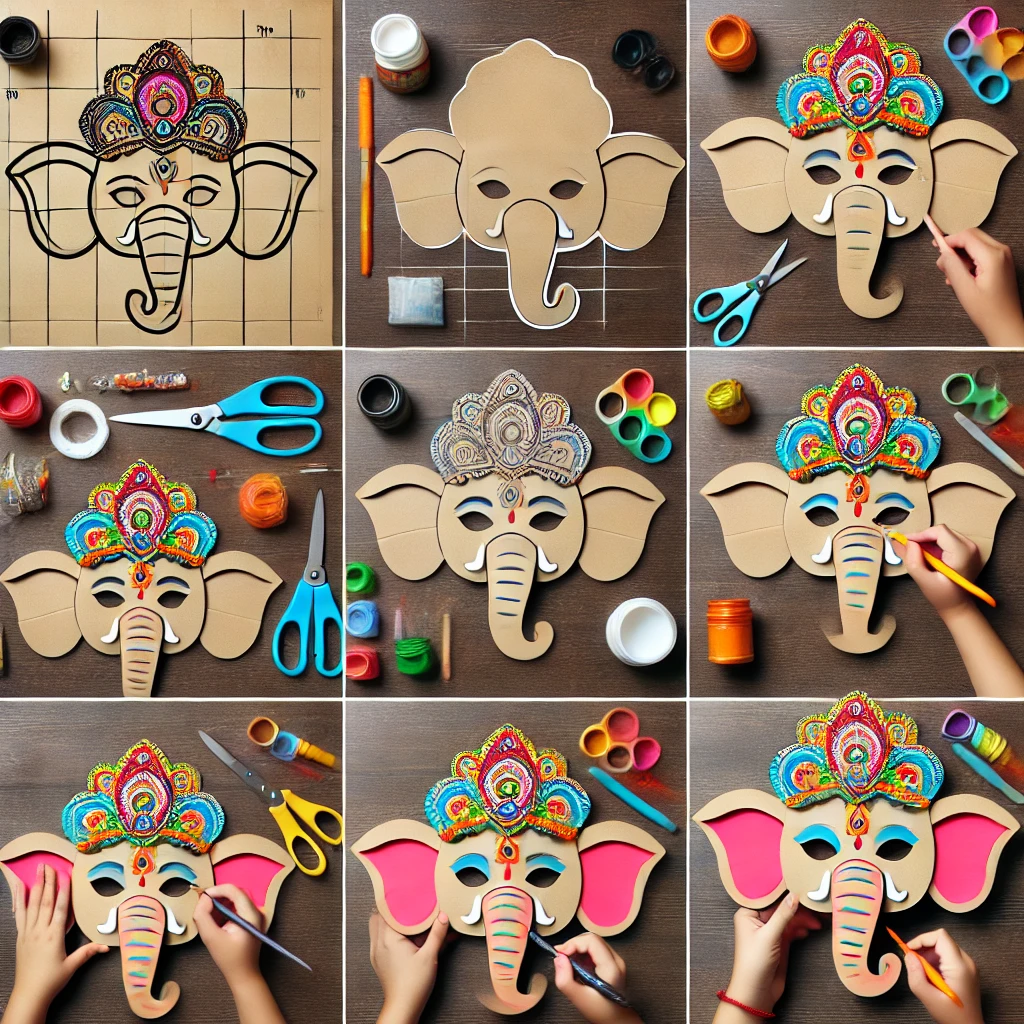Why Go Eco-Friendly? Best Craft Ideas For Kids
Ganesh Chaturthi is one of India's most beloved and vibrant festivals, celebrated across the country, especially in western states like Maharashtra. In 2025, Ganesh Chaturthi will once again unite families, schools, and communities in paying tribute to Lord Ganesha, the remover of obstacles and the harbinger of wisdom and prosperity. A highlight of this festival is crafting Ganesha idols at home or in classes—an activity that nurtures creativity, environmental consciousness, and cultural pride in students. This page explores the historical context of Ganesh Chaturthi, its significance, and educational craft ideas for students to actively participate in the festivities, all while focusing on eco-friendly practices and hands-on learning.
Also Check for: Ganesha Writes the Mahabharata: The Story, Significance, and Lessons for Students
Ganesh Chaturthi 2025: Make Creative, Eco-Friendly Ganesha Idols at Home
Significance and Historical Background of Ganesh Chaturthi
Ganesh Chaturthi marks the birth of Lord Ganesha, revered as the God of wisdom, learning, and new beginnings. Historically, the public celebration of this festival was popularized in the late 19th century by Lokmanya Tilak, who aimed to unite Indians against colonial rule. Today, Ganesh Chaturthi is not only a spiritual occasion but also an opportunity for cultural expression, community engagement, and environmental awareness. It brings together people from all walks of life to celebrate with devotion through prayers, music, traditional foods, and the making of Ganesha idols that symbolize new hopes and continuity of tradition.

Why Making Ganesha Idols Matters for Students
Crafting a Ganesha idol at home or in a classroom is a meaningful activity that combines art, tradition, and environmental sensitivity. With growing awareness about eco-friendly practices, many schools and families now emphasize using natural or biodegradable materials instead of chemical paints or plaster of Paris. This helps students learn about sustainability, develop fine motor skills, encourage teamwork, and connect more deeply with Indian culture. Additionally, participating in competitions or group crafts fosters collaboration and a sense of achievement among young learners.
Top Ganesh Chaturthi Idol Craft Ideas for 2025
Below are five engaging, eco-friendly craft ideas for making your own Lord Ganesha idol at home or for school projects in 2025. Each idea encourages creativity, hands-on learning, and mindful celebration.
-
Clay Ganesha (Traditional)

Use natural clay or garden mud to shape a Ganesha idol. Students can mold detailed features and add plant-based colours like turmeric, henna, or water paints. Once the festival concludes, the clay idol can be immersed without harming the environment.
-
Paper Mache Ganesha

Create a base with old newspapers and eco-friendly glue to form the shape of Ganesha. Once dry, students can paint and decorate with pulses or seeds for added texture. This craft is ideal for group projects and encourages recycling at home.
-
Origami Ganesha

Using coloured or recycled origami sheets, students can fold beautiful mini-idols, paying attention to Ganesha’s famous features. This approach is especially useful for classroom displays and decoration.
-
Dough or Salt Dough Ganesha

Children can make a dough using flour, salt, and water. The idol can then be air-dried or baked (with adult supervision) before colouring with natural, edible dyes. This method is non-toxic and safe for young crafters.
-
DIY Ganesh Masks for Group Activities

Use recycled cardboard, colours, and elastic bands to create Ganesha masks. These can be painted and decorated, then worn during class presentations or cultural assemblies.
Also Know About: Essay on Ganesh Chaturthi 2025
Tips for Eco-Friendly and Innovative Ganesha Crafts
Students are encouraged to use sustainable resources and avoid materials like thermocol, chemical glitters, or synthetic paints. Consider these ideas for safer and more creative idol-making:
- Choose clay, paper mache, or upcycled items like bottles or newspapers.
- Decorate with natural items such as seeds, dried leaves, flower petals, or pulses.
- Use plant-based colours: turmeric, henna, beetroot, or water-soluble paints.
- Present your idol with a note describing your green choices and the meaning behind your idol design.
How Schools and Students Can Celebrate Ganesh Chaturthi 2025
Many schools introduce craft competitions, group projects, and eco-awareness discussions during Ganesh Chaturthi. If you're presenting your idol:
- Highlight the materials and sustainability behind your craft.
- Explain the symbolism of Ganesha—wisdom, new beginnings, and care for nature.
- Maintain neatness, showcase originality, and confidently share your process during presentations.
- Participate in school assemblies or exhibitions dedicated to Indian culture and environmental themes.
Educational Takeaways from Ganesha Idol Crafts
Ganesh Chaturthi crafts help students blend tradition with innovation. Key learning points include:
- Hands-on practice improves motor skills and sense of detail.
- Collaborative crafting builds teamwork and communication.
- Eco-friendly art reinforces respect for the environment and Indian heritage.
- Promotes responsible celebration by teaching the consequences of water pollution and the importance of biodegradable materials.
Also Check for: Ganesha Curses the Moon: Cultural Meaning and Lessons for Students
Ganesh Chaturthi 2025 offers students and educators an excellent opportunity to combine cultural learning with sustainable practices. Making Ganesha idols at home or school fosters creativity, reinforces environmental responsibility, and ensures that the festival’s joy leaves a positive impact on both society and nature. By choosing eco-friendly materials, embracing teamwork, and linking traditions with modern values, young learners become champions of a greener future and proud bearers of cultural heritage.
FAQs on Creative and Eco-Friendly Ganesha Idol Craft Ideas for Kids
1. What is Hiroshima Day and why is it observed?
Hiroshima Day is observed every year on August 6 to commemorate the atomic bombing of Hiroshima, Japan in 1945. It serves as a reminder of the devastating impact of nuclear weapons and aims to promote global peace and nuclear disarmament.
- Marks the anniversary of the bombing during World War II
- Remembers victims and survivors (hibakusha)
- Highlights the importance of peace education and nuclear weapon bans
- Encourages a nuclear-free future for humanity
2. When is Hiroshima Day celebrated?
Hiroshima Day is celebrated every year on August 6.
- Commemorates the atomic bombing of Hiroshima in 1945
- Observed worldwide by peace activists, students, and institutions
- Often accompanies ceremonies, educational events, and art installations
3. What happened on Hiroshima Day?
On August 6, 1945, the city of Hiroshima in Japan was struck by an atomic bomb dropped by the United States, marking one of the most devastating events of World War II.
- The bomb destroyed much of the city
- Over 140,000 people lost their lives by the end of 1945
- Highlighted the dangers of nuclear warfare
- Led to increased global calls for nuclear disarmament and peace
4. What is the theme of Hiroshima Day 2025?
The theme for Hiroshima Day 2025 focuses on "Remember, Learn, Act" (sample theme—update if official one is released). This theme encourages reflection on the past, education about nuclear dangers, and action towards a peaceful and nuclear-free world.
- Emphasizes remembering the victims
- Encourages spreading awareness on nuclear weapons risks
- Promotes peace-building initiatives globally
5. How is Hiroshima Day observed globally?
Worldwide, Hiroshima Day is observed through a variety of peace-focused activities:
- Holding peace ceremonies and silent prayers
- Organizing art exhibitions and educational programs
- Hosting speeches, rallies, and campaigns for nuclear disarmament
- Schools conduct essay and poster competitions
- Sharing messages of peace on social media
6. What is the importance of Hiroshima Day?
Hiroshima Day holds global importance by reminding humanity of the catastrophic effects of nuclear conflict and the urgent need for peace.
- Honors the memory of those affected in 1945
- Promotes peace education and anti-nuclear campaigns
- Encourages governments to pursue nuclear disarmament
7. What are some famous Hiroshima Day quotes?
Famous quotes for Hiroshima Day inspire peace and remembrance. Examples include:
- "Let all the souls here rest in peace, for we shall not repeat the evil." — Hiroshima Peace Memorial
- "The world must never forget Hiroshima."
- "Peace is the only victory."
- Use these quotes in speeches, posters, and campaigns to spread awareness and empathy.
8. How can schools observe Hiroshima Day?
Schools can observe Hiroshima Day by educating students about its significance and promoting peace initiatives.
- Organize special assemblies or moments of silence
- Host essay and poster-making competitions
- Display documentaries or survivor stories (hibakusha)
- Invite speakers or conduct peace workshops
9. What is the difference between Hiroshima Day and Nagasaki Day?
Hiroshima Day is on August 6 while Nagasaki Day is observed on August 9. Both recall the atomic bombings in Japan during World War II, but commemorate separate cities.
- Hiroshima: First atomic bombing (August 6, 1945)
- Nagasaki: Second atomic bombing (August 9, 1945)
- Both days spread messages of peace and anti-nuclear awareness
10. Why is nuclear disarmament important?
Nuclear disarmament is important for ensuring global security and preventing humanitarian disasters.
- Reduces the risk of nuclear war or accidents
- Protects future generations from nuclear threats
- Supports international treaties and peace efforts
- Fulfills the vision of a nuclear-weapon-free world, as promoted on Hiroshima Day







